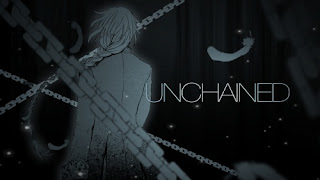"The main purpose of making this amv was to expand my Lip-syncing prowess, and I definitely got the chance to put together a number of complicated shots. The shot on the line ".. to be less of a loser" is the most difficult shot I've ever had to lipsync with 2 layers of moving background, a bar in the foreground, a shadow over her face briefly, and hair swaying over her jawline on either sides of a side-profile shot."
Original Post @ animemusicvideos.org in 720p
Linux Digital Artisan Tools
Lets take a look at our tools and get familiar with them. When editing I prefer a combination of LiVES, Cinelerra, and customized Gimp script that interfaces it with LiVES, but in favor of the K.I.S.S. method, this site will use KdenLive. It is easy to use and is often compared to Sony Vegas Pro.
All the tools on this site are Linux tools, and any Linux distro, should have KdenLive in its' application repository. In Linux most of the users install all of there software, from one source, that is maintained by the developers of the operating system. They do so using a package manager. It is one of the top priorities to look into when choosing a Linux Distro. The package manager makes or breaks a good Distro. New users are recommended to use Ubuntu.
This quick tutorial will teach you how to put together a video complete with titles, transitions and effects! It's easy to learn the basics of video editing, especially in Linux! It's like Sony Vegas, except it's free and open-source!
This tutorial will teach you how to create a picture in picture transition.
This tutorial will show you how to overlay several images over a video and animate them.
As seen above, video editing is easy, just make a couple videos, do a slide-show, and get to know the layout. Skills in gimp are also a must for adding lot more functionality tool your toolkit as a digital artisan. The star animation in the last video was made with GIMP, and synfig, both of these apps are also available on windows. The animation was basically a slide-show.
Here is a two part introduction to GIMP Basics. Gimp is a photoshop substitute. The tutorial covers the scale, crop, cut with transparency, flip, and rotate commands. It was created by Mike Lively of Northern Kentucky University.
This part covers saving and file size reduction. While the creator of these tutorial recommends, saving as a jpg, gif, or png, when I save an image for editing in a video I save it an the OpenEXR format. OpenEXR is a high dynamic range imaging image file format. TGA File Format, often referred to as TARGA File Format, is a raster graphics file format, and is also ideal for games design.
All the tools on this site are Linux tools, and any Linux distro, should have KdenLive in its' application repository. In Linux most of the users install all of there software, from one source, that is maintained by the developers of the operating system. They do so using a package manager. It is one of the top priorities to look into when choosing a Linux Distro. The package manager makes or breaks a good Distro. New users are recommended to use Ubuntu.
This quick tutorial will teach you how to put together a video complete with titles, transitions and effects! It's easy to learn the basics of video editing, especially in Linux! It's like Sony Vegas, except it's free and open-source!
This tutorial will teach you how to create a picture in picture transition.
This tutorial will show you how to overlay several images over a video and animate them.
As seen above, video editing is easy, just make a couple videos, do a slide-show, and get to know the layout. Skills in gimp are also a must for adding lot more functionality tool your toolkit as a digital artisan. The star animation in the last video was made with GIMP, and synfig, both of these apps are also available on windows. The animation was basically a slide-show.
Here is a two part introduction to GIMP Basics. Gimp is a photoshop substitute. The tutorial covers the scale, crop, cut with transparency, flip, and rotate commands. It was created by Mike Lively of Northern Kentucky University.
This part covers saving and file size reduction. While the creator of these tutorial recommends, saving as a jpg, gif, or png, when I save an image for editing in a video I save it an the OpenEXR format. OpenEXR is a high dynamic range imaging image file format. TGA File Format, often referred to as TARGA File Format, is a raster graphics file format, and is also ideal for games design.


















